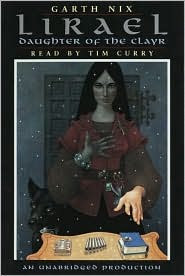
Catching Fire by Suzanne Collins. The sequel to The Hunger Games is fast paced, filled with surprises and more shocking than its predecessor. I can’t count the number of times that I gasped “WHAT?!” out loud while reading it for the first time. Many of the twists were as surprising as being hit in the face with a fish. Throw out any preconceived notions about Panem and the Districts when reading Catching Fire; as Katniss finds out, anything goes as far as her government is concerned, and no one is safe. As soon as I finished Catching Fire, I immediately went back and reread The Hunger Games looking for clues I might have missed. They were there in abundance, seemingly innocent comments that were in truth doublespeak worthy of 1984. I heartily applaud Ms. Collins’ world building, gripping plot structures and amazing characterizations.
Honorable mention goes to “The Thirteenth Child” by Patricia C. Wrede, “Going Bovine” by Libba Bray and “The Singing” by Allison Croggon.
The “Meh” book of 2009 Award:

Pride and Prejudice and Zombies by Jane Austen and Seth Garahame-Smith. With an exciting twist to the classic work, I was expecting a great story that still incorporated what the world loved about the original. I was let down, like someone pulling the mattress out from under you in the middle of the night. The characters were flat and the romance between Lizzy and Darcy was as cold and lifeless as the zombies they’ve were trained to kill. If only they died and the book ended earlier, sparing everyone the lackluster finale. To make matters worse, P&P&Z will be coming to a theater near you in 2011 staring Ms. Natalie Portman as Lizzy Bennet. Do I hear a rounding “Huzzah”? No? Good.
Coming Soon in 2010:
March 2nd 2010-- Shadowrise (volume 3 of Shadowmarch) by Tad Williams. I haven’t read any of the Shadowmarch books yet because of Mr. Williams’ penchant for cliffhangers. I’m looking forward to being able to start the series as soon as the last book comes out.
March 16th 2010-- Lord Sunday (Book 7 of the Keys to the Kingdom) by Garth Nix. The conclusion to Mr. Nix’s stunning tale about the lackadaisical Trustees (Mister Monday, Grim Tuesday, Drowned Wednesday, etc) and their battle for the House against the Rightful Heir of the Architect, asthmatic mortal Arthur Penhaligon will undoubtedly be as astounding and inventive as the first six.
September 28th, 2010-- The Fiend and the Forge (book 3 of the Tapestry) by Henry H. Neff. Max McDaniels sets off to retrieve the Book of Origins from archfiend Astaroth, who is busy wiping out all of mankind’s greatest discoveries
October 2010-- The Scorch Trials (sequel to The Maze Runner) by James Dashner. Thomas and his friends are up against the same enemy again, but this time out in the real world. (Thanks, Elysia, for pointing this one out to me. Review of Maze runner coming soon!)
Fall 2010-- Hunger Games book 3 (currently untitled) by Suzanne Collins. The conclusion to the Hunger Games and Catching Fire will (probably) set Katniss against her government. (Again, thanks to Elysia for recommending The Hunger Games!)
Fall 2010-- Pegasus by Robin McKinley. The princess of a kingdom shared jointly between humans and the Pegasai goes on an adventure.
TBD 2010-- Mastiff (Beka Cooper book 3) by Tamora Pierce. The conclusion to the Beka Cooper trilogy pits Beka against kidnappers who have abducted the heir to the realm.





















